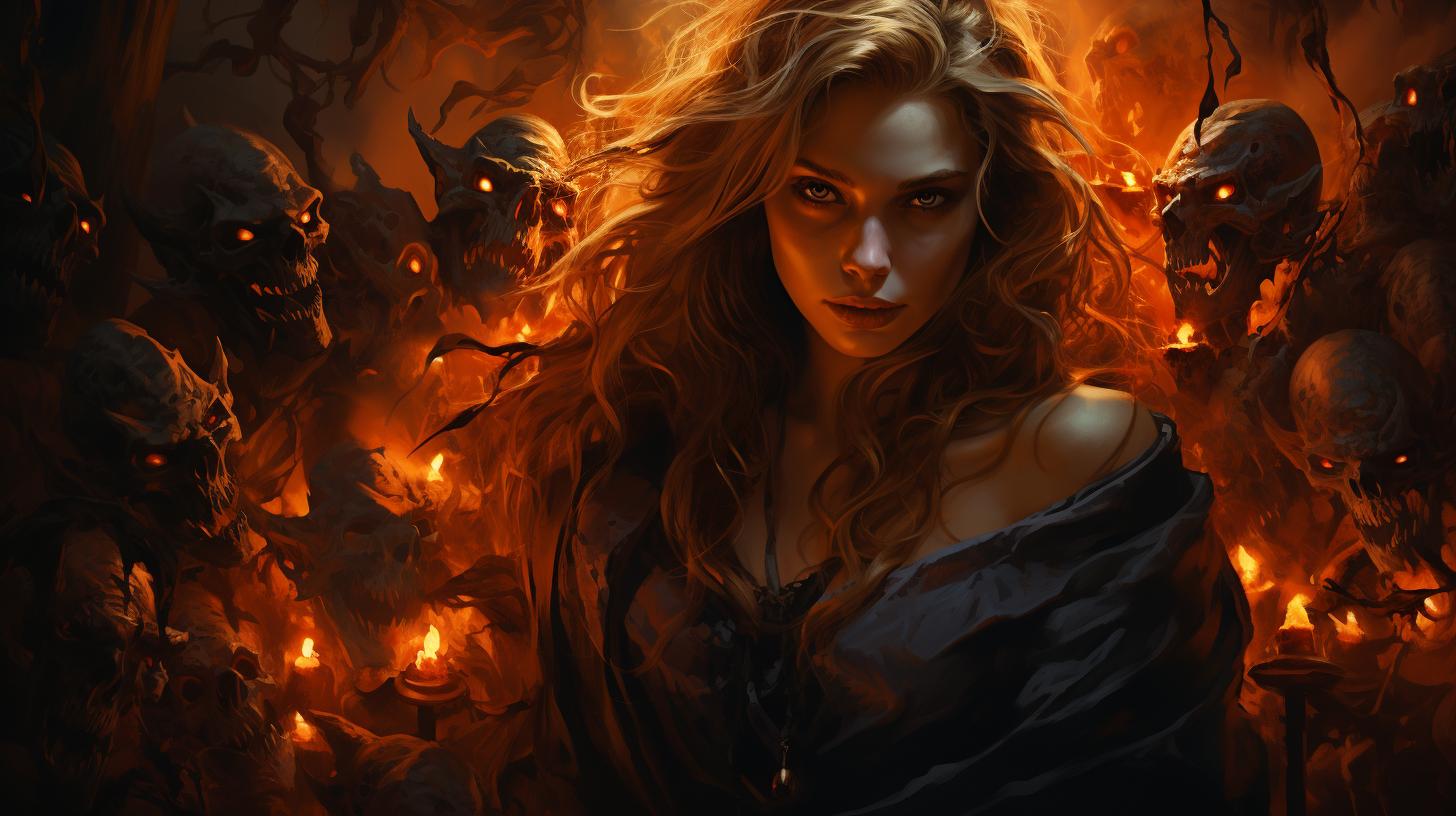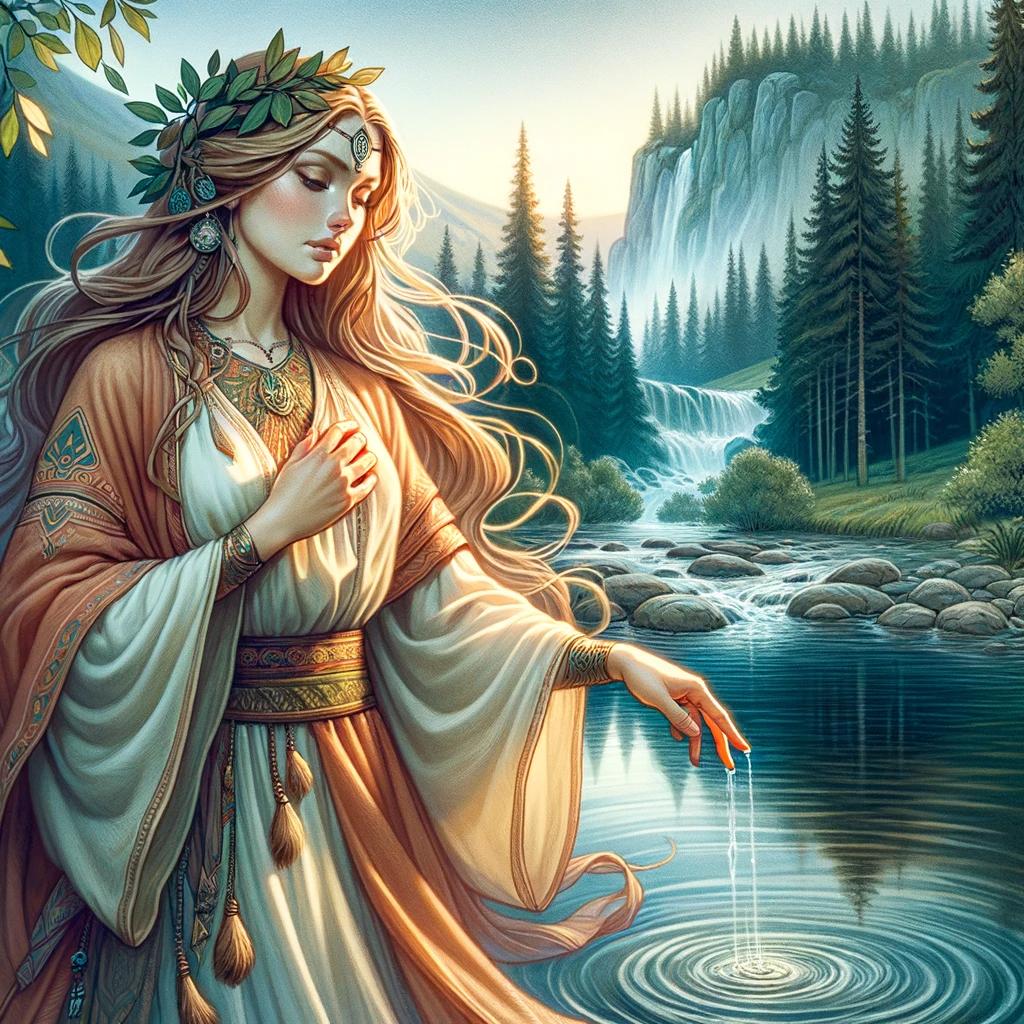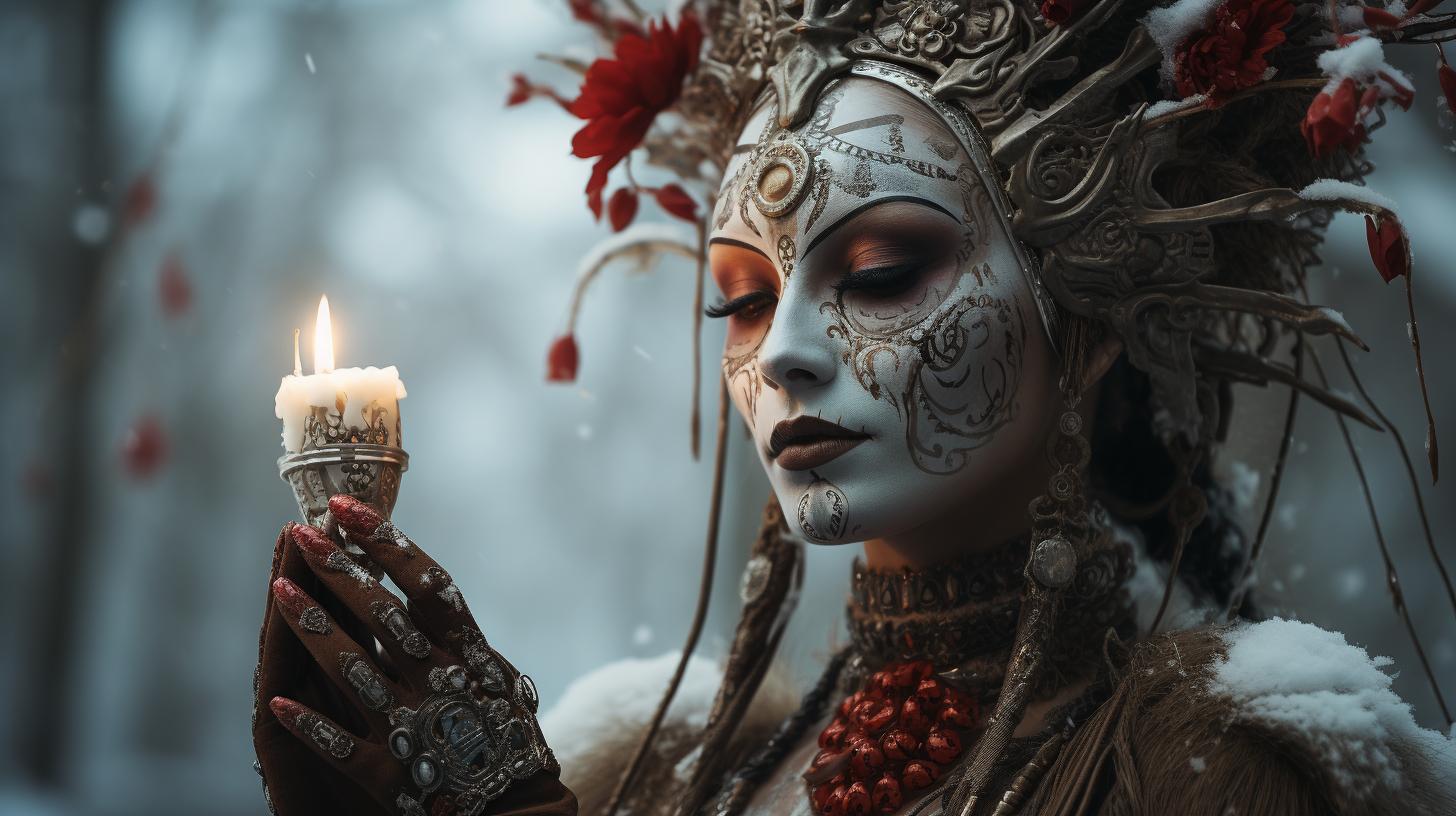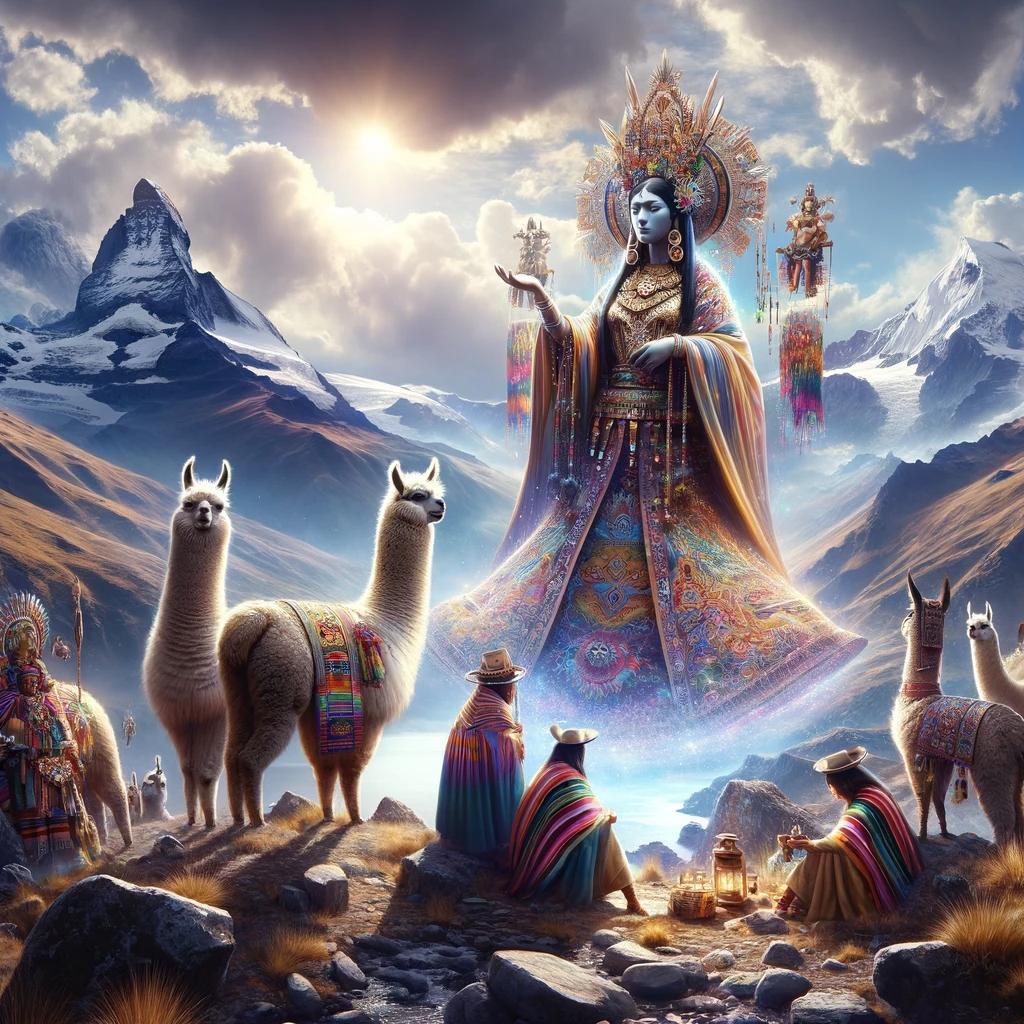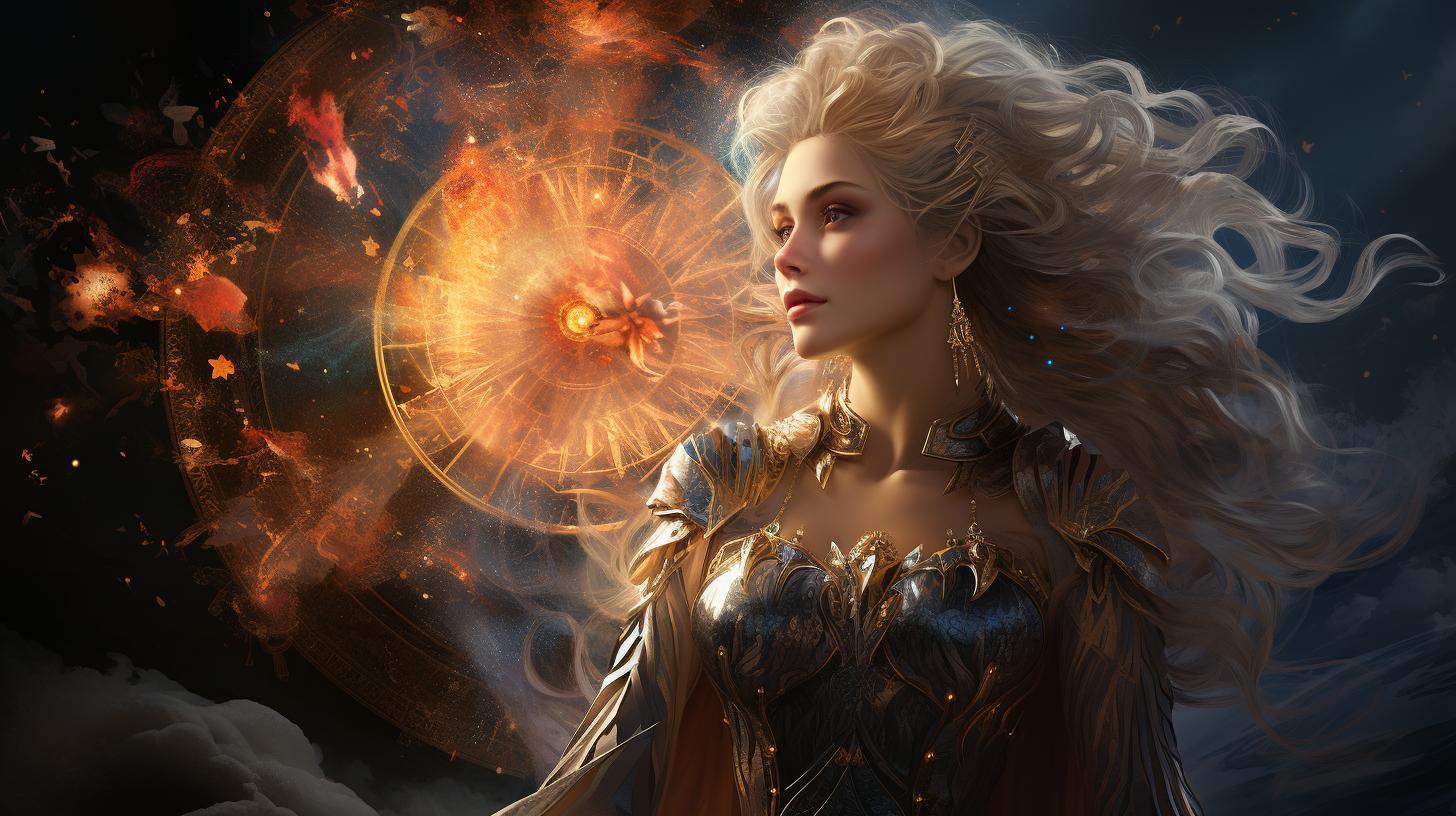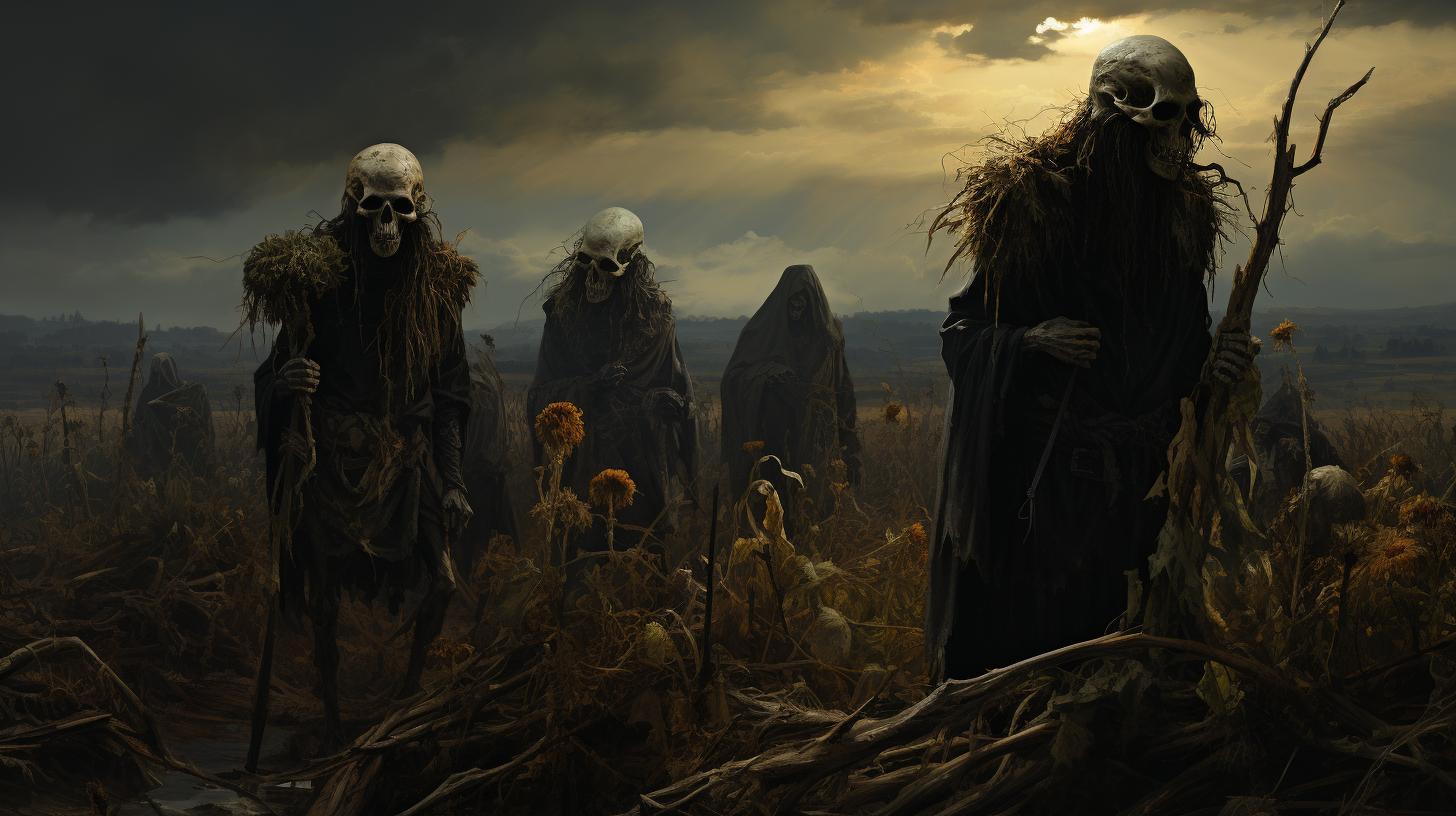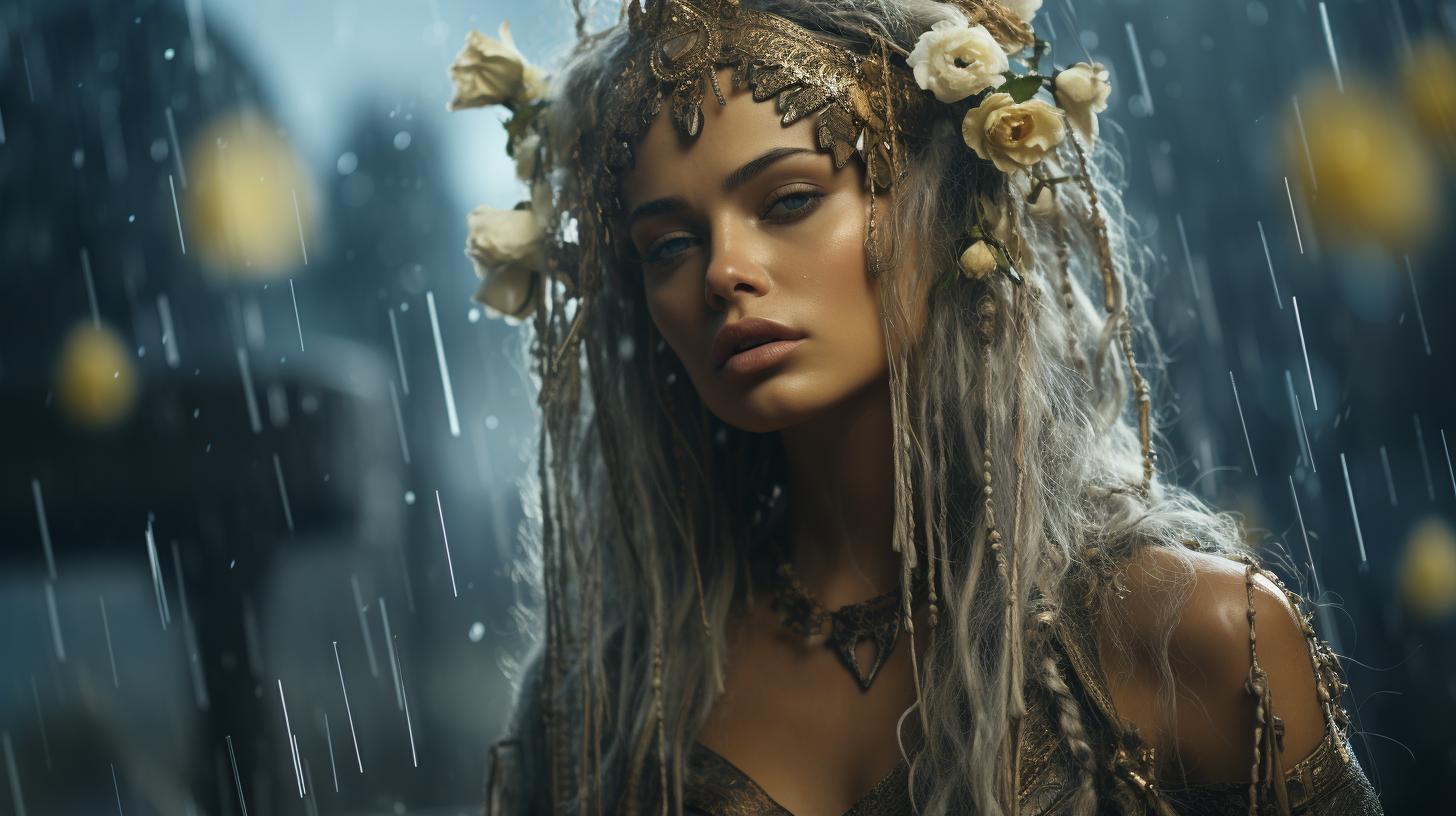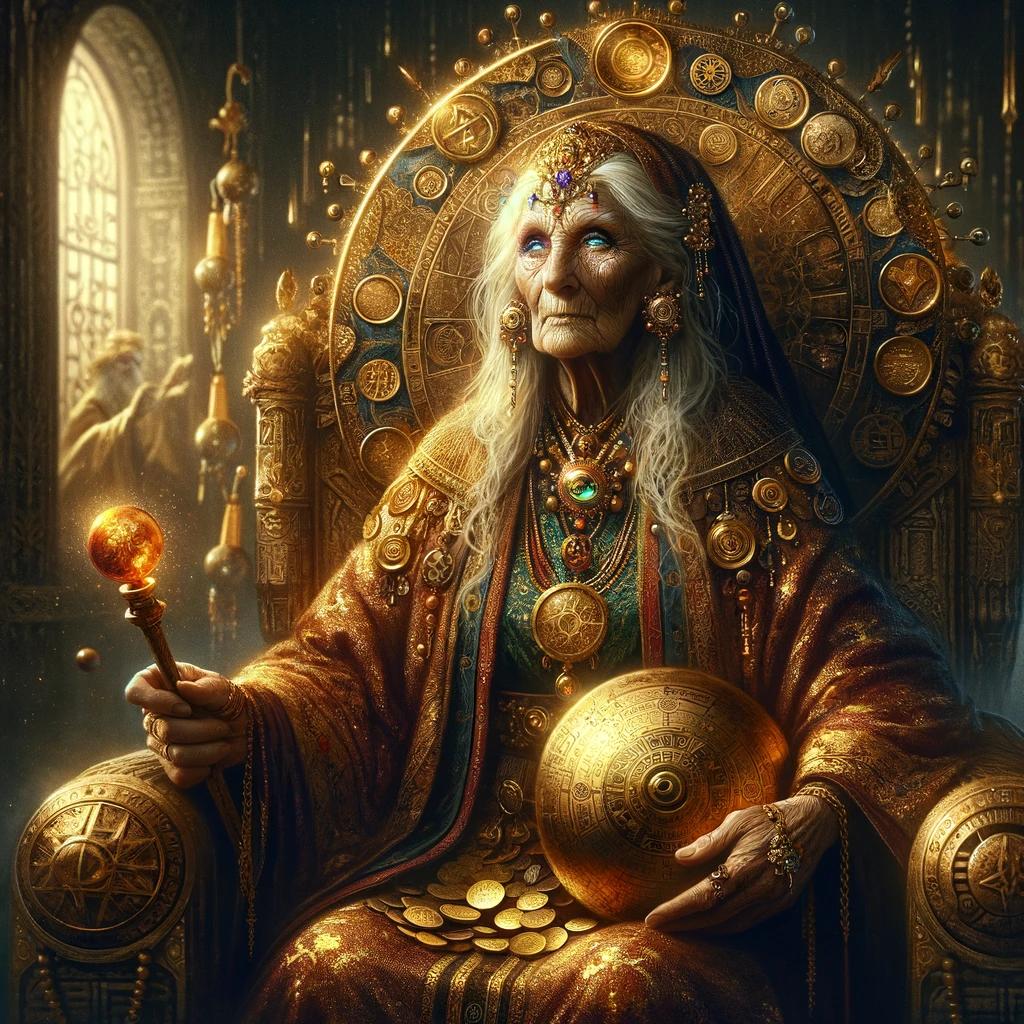Poludnica Mythology: Unveiling the Mysterious Slavic Deity of the Fields
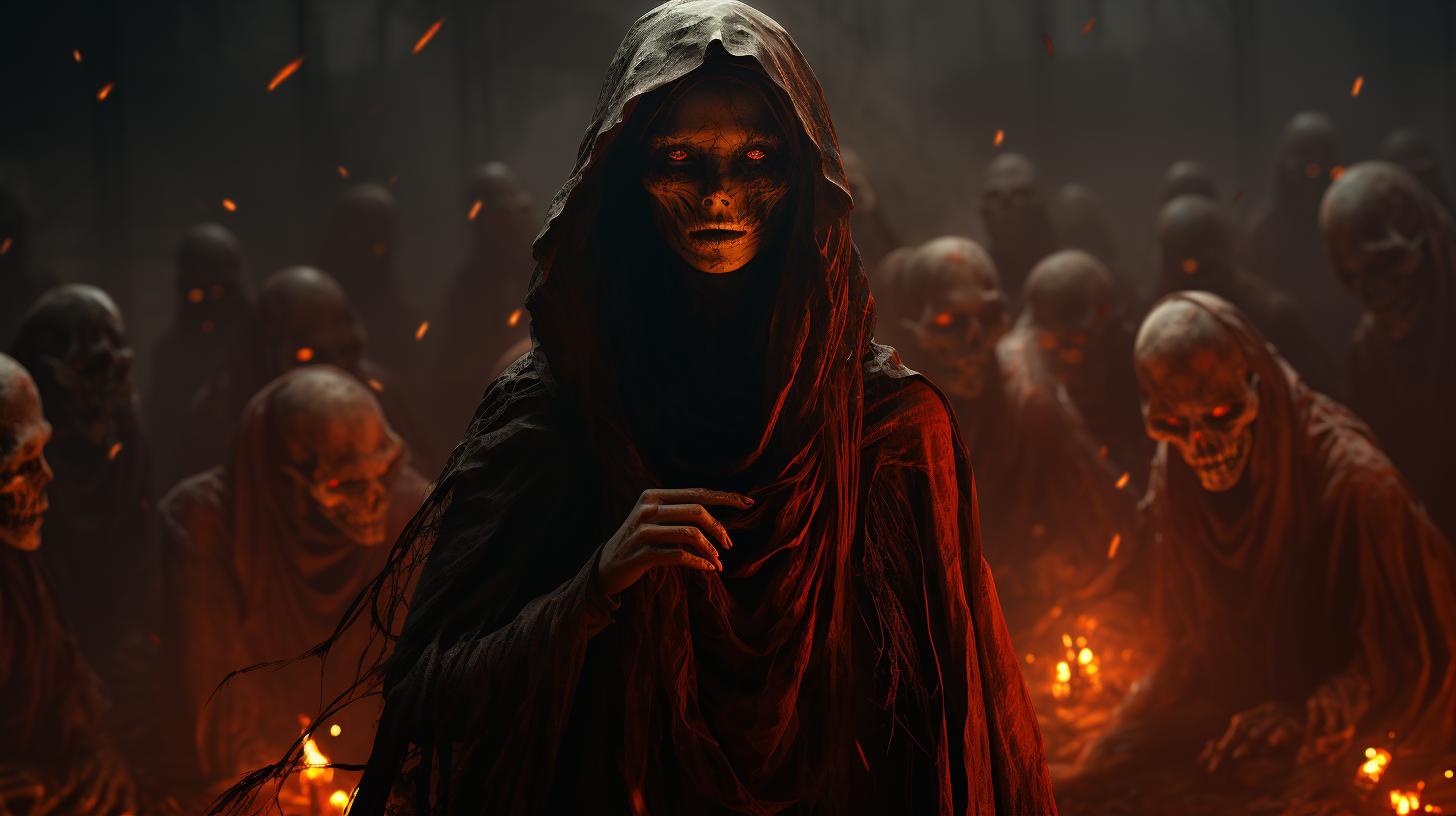
Poludnica mythology is a fascinating aspect of Slavic folklore, with roots in Eastern European traditions. This ancient deity, known as the Noon Witch, holds dual roles as a protector of agriculture and a mischievous spirit who punishes those who toil in the fields at noon.
Throughout different regions, Poludnica is depicted as a white ethereal woman, an old crone, or even a young girl, often wielding a sharp sickle. This article explores Poludnica’s origins, characteristics, interactions with humans, and its presence in various Slavic cultures, shedding light on its significance in myth and literature.
The Origins and Cultural Significance of Poludnica
Explore the intriguing origins and cultural significance of Poludnica within Slavic mythology. From its historical background to its representation in Russian and Serbian folklore, this section unveils the captivating nature of this mythical entity.
Historical Background of Poludnica in Slavic Mythology
Delve into the historical roots of Poludnica, tracing its origins back to the ancient Slavic mythological beliefs. Uncover the legends, tales, and rituals associated with this enigmatic deity, shedding light on its position in the pantheon of Slavic gods and goddesses.
Poludnica in Russian Folklore
Discover the specific role and representation of Poludnica in Russian folklore. Learn about the unique characteristics and stories surrounding this mythical figure, as she appears as a tall and beautiful girl dressed in white.
Dive into the encounters between Poludnica and unsuspecting individuals who cross her path during the scorching noon time.
Poludnica in Serbian Folklore
Explore the presence of Poludnica in Serbian folklore, where she assumes various forms and holds multiple meanings. Unravel the significance of her association with hot summer days and how her presence influences the lives of those working in the fields.
Discover the intriguing tales and beliefs surrounding this elusive figure.
The Poludnica Entity: Characteristics and Representations
Poludnica’s Appearance and Form
The Poludnica deity exhibits a diverse range of appearances, varying across different Slavic regions. Often depicted as a ghostly white woman, she can also take the form of an elderly woman or a young girl.
Symbolizing ethereal beauty, she may be seen carrying a sharp sickle, representing her association with agriculture and the fields.
Poludnica’s Role as a Noon Witch
As a notorious noon witch, Poludnica casts her mischievous presence upon those toiling in the fields at midday. While some view her as a patron of agriculture, others fear her wrathful nature and the punishments she inflicts upon unsuspecting workers.
Her association with the harshness of noon symbolizes the importance of proper protection and respect during the intense summer heat.
Poludnica’s Connection to the Sun and Hot Summer Days
Poludnica’s connection to the sun and the scorching summer days lies at the core of her mythology. Often considered a personification of the sun’s intense power, she embodies the dangers and challenges faced by farmers during the hottest part of the day.
The belief in her existence serves as a reminder of the need for caution and understanding of the natural world’s forces.
Poludnica’s Actions and Interactions with Humans
As a mystical entity in Slavic mythology, Poludnica is known for her intriguing behavior towards women and children. Let’s explore how she interacts with these vulnerable groups:
Poludnica’s Behavior Towards Women and Children
Poludnica holds a particular fascination with women who have recently given birth and children who find themselves alone in the fields during harvest.
Legends depict her as a dangerous and elusive figure, often with horse hooves in Moravian folklore or as a moon maiden symbolizing fertility in Ukrainian tradition.
Poludnica’s Presence in the Fields and its Impact on Agriculture
Poludnica is believed to roam the fields at noon, withholding her presence until the scorching sun reaches its peak.
Farmers and laborers fear crossing paths with her, as it is said that encountering her can bring about violent pain and misfortune. This association with the midday sun underscores her connection to agricultural activities.
Poludnica’s Enigmatic Questions and Harvesting Beliefs
In Polish folklore, Poludnica is infamous for posing enigmatic questions to unsuspecting individuals to test their wit and knowledge. Those who fail to answer correctly are believed to fall victim to her harvesting actions, resulting in dire consequences.
This twisted game serves as a cautionary tale of the dangers associated with ignorance and arrogance.
Understanding Poludnica’s actions and interactions with humans sheds light on the intricate relationship between folklore, agriculture, and the cultural beliefs of Slavic communities.
Exploring her behavior towards women and children, the impact of her presence in the fields, and the significance of her enigmatic questions provides a deeper understanding of the complexities surrounding this enigmatic deity.
The Poludnica Mythology in Different Slavic Regions
Poludnica, the enigmatic deity of Slavic folklore, holds a significant place in various regions, each contributing unique perspectives to its mythology.
Poludnica in Polish Folklore
In Polish folklore, Poludnica is portrayed as a mischievous spirit that punishes those who work in the fields at noon. She is often depicted as a white, ethereal figure or an elderly woman with a sharp sickle in hand.
Her role extends beyond agriculture, as she also haunts women who have recently given birth and poses enigmatic questions, reaping those who fail to answer.
Poludnica in Ukrainian Folklore
In Ukrainian folklore, Poludnica is seen as a maiden of the moon, believed to ensure fertility in the fields. Sometimes adorned with horse hooves, she stalks the fields during the harvest season.
Her presence provokes caution among women who have recently given birth, and she takes particular interest in children left unattended during this time.
Poludnica in Moravian Folklore
Among the Moravians, Poludnica is associated with horse hooves and is regarded as a guardian figure for the fields. She holds sway over the midday hours, casting her watchful eye upon those who toil in the fields.
Farmers remain wary of encountering her and take precautions to avoid her wrath.
These distinct regional interpretations of Poludnica demonstrate the rich diversity within Slavic mythology, where the figure’s characteristics and interactions vary, yet the underlying essence of a powerful agricultural deity remains prevalent.
Poludnica in Modern Literature and Pop Culture
Poludnica, the intriguing Slavic deity, continues to captivate modern audiences through its appearances in literature and popular culture. Its enigmatic nature and association with agricultural traditions have made it a compelling subject in various works of fiction and fantasy.
This section explores two prominent manifestations of Poludnica in modern literature and pop culture.
Poludnica in ‘The Witcher’ Series
The Witcher, a popular fantasy book and video game series created by Andrzej Sapkowski, prominently features Poludnica within its intricate world. In this captivating universe, Poludnica’s characteristics are woven into the narrative, captivating readers and gamers alike.
In ‘The Witcher’ series, Poludnica plays a significant role as a mysterious and powerful entity closely connected to the fields and agricultural activities. Its enigmatic presence and unpredictable behavior add depth and intrigue to the story, as characters must navigate encounters with this supernatural being.
Poludnica in Contemporary Fantasy and Fiction
Poludnica’s allure extends beyond ‘The Witcher’ series, making appearances in various contemporary works of fantasy and fiction. Authors and storytellers draw inspiration from Slavic mythology, incorporating Poludnica into their imaginative worlds.
In these contemporary works, Poludnica often retains its association with the fields and agricultural themes, while also being imbued with unique characteristics and roles. Whether as a benevolent protector or a sinister trickster, Poludnica continues to fascinate audiences and enrich the tapestry of modern storytelling.
- Poludnica’s presence in contemporary fantasy reflects the enduring fascination with Slavic mythology and its deep-rooted symbolism.
- Authors and creators skillfully weave Poludnica’s mystique into their narratives, providing a touch of enchantment and other-worldliness.
- Through their portrayals, they capture the imagination of readers and viewers, shedding light on the rich tapestry of Slavic folklore.
As modern literature and pop culture continue to embrace the allure of Poludnica, audiences can expect to encounter this enigmatic deity in captivating and unexpected ways in the years to come.
Exploring the Significance of Poludnica Mythology in ‘The Frostmarked Chronicles’
The Frostmarked Chronicles, a captivating series of books, takes readers on a thrilling journey through a fantastical world filled with magic, adventure, and ancient mythologies. While the Poludnica mythology has not yet been explicitly included in this beloved series, there is a significant potential for its incorporation in future storylines, especially considering the vital role that agriculture plays in this fictional universe.
The Frostmarked Chronicles beautifully depict the intricate connections between nature, tradition, and supernatural entities. By featuring Poludnica, the mythology surrounding this enigmatic Slavic deity can be explored within the context of the series, shedding light on its influence on the characters, events, and the overall narrative.
By incorporating the Poludnica mythology, The Frostmarked Chronicles can delve into the complexities of the agricultural realm, interweaving the mystical aspects of this folklore into the lives of the characters. This exploration can offer readers a deeper understanding of the profound impact that ancient mythologies have on the world-building and storytelling within the series.
Furthermore, the incorporation of Poludnica in The Frostmarked Chronicles can serve as a bridge for readers to discover and appreciate the rich cultural heritage of Slavic mythology. It presents an opportunity to delve into the lesser-known aspects of this captivating belief system, fostering a greater appreciation for diverse mythologies and their contributions to literature.
- Effect on character development: Poludnica’s presence and its mythology can provide a poignant backdrop for character growth, challenges, and inner conflicts. The characters’ interactions with this deity of the fields can unveil their resilience, resourcefulness, and their ability to overcome adversity.
- Symbolism and thematic exploration: The inclusion of the Poludnica mythology can add depth and symbolism to themes of balance between nature and humanity, the cyclical nature of life and death, and the consequences of disrespecting ancient traditions.
- Intrigue and suspense: Poludnica’s mischievous and sometimes malevolent nature can introduce a sense of mystery, suspense, and danger to the storyline, propelling readers into a suspenseful journey alongside the characters.
- Moral dilemmas and ethical considerations: The encounters with Poludnica can pose moral dilemmas for the characters, forcing them to evaluate their actions, beliefs, and their relationship with the natural world.
This exploration can evoke thought-provoking discussions and reflections among readers.
In conclusion, the incorporation of the Poludnica mythology in The Frostmarked Chronicles offers a promising opportunity to delve into the rich heritage of Slavic folklore while enhancing character development, thematic exploration, and suspense within the series.
As readers eagerly await future installments of this captivating saga, the inclusion of Poludnica promises to deepen their engagement with the fantastical world and broaden their understanding of mythical beliefs.
Unraveling Mysteries: Debunking Myths and Misconceptions
Welcome to the fascinating world of Poludnica mythology, where ancient tales and beliefs intertwine.
In this section, we will delve into the myths and misconceptions surrounding Poludnica, shedding light on popular misunderstandings. Let’s uncover the truth behind the enigmatic Poludnica.
Clarifying Common Misinterpretations of Poludnica
The myths surrounding Poludnica have sparked various interpretations over time.
However, it is essential to address some misconceptions that have led to misunderstandings. Here, we clarify these common misinterpretations:
- Poludnica as a Malevolent Spirit: While Poludnica is often depicted as a mischievous deity associated with punishment, it is crucial to note that she serves a dual role as both a protective guardian of agriculture and a trickster figure.
The complexity of Poludnica’s character should not be oversimplified.
- Poludnica as a Singular Being: In different Slavic regions, Poludnica may be represented differently, sometimes as an ethereal woman, an old lady, or even a young girl.
It’s important to understand that Poludnica’s appearance can vary based on regional folklore, allowing for diverse interpretations.
- Poludnica as a Demon: While Poludnica is associated with supernatural powers and vigilance in the fields, she should not be mistaken for a demonic entity.
The notion of Poludnica as an evil spirit is an oversimplification that disregards her connection to agricultural fertility and protection.
Addressing Frequently Asked Questions about Poludnica
Delving deeper into the intricacies of Poludnica mythology, let’s explore some frequently asked questions that arise:
- Is Poludnica exclusive to Slavic mythology? Yes, Poludnica is predominantly found in Slavic folklore, particularly in Eastern European regions.
Though some parallels can be drawn with similar mythological figures in other cultures, Poludnica remains primarily rooted in Slavic traditions.
- Does Poludnica symbolize a specific time of day? Indeed, Poludnica is associated with the scorching noon hours when the sun is at its highest point.
This time is believed to be when Poludnica roams the fields, protecting or punishing those who work during this hour.
- Are there any folklore remedies to protect oneself from Poludnica? Folklore suggests several ways to avoid encountering Poludnica’s wrath, such as carrying protective herbs or wearing certain charms.
These rituals aim to ward off her mischief and ensure a safe passage through the fields.
By dispelling myths and addressing common questions, we aim to provide a clearer understanding of Poludnica and her intricate mythology.
As we continue our exploration, let us embrace the diverse interpretations and immerse ourselves in the captivating world of Poludnica.
The Future of Poludnica Mythology Studies
In recent years, the study of Poludnica mythology has gained significant attention from scholars and enthusiasts alike. As our understanding of Slavic folklore continues to expand, researchers are increasingly delving into the depths of Poludnica’s origins, significance, and cultural impact.
One promising avenue for future exploration is the examination of historical documents and primary sources that may shed light on Poludnica’s role in Slavic societies. By analyzing these materials, researchers can uncover deeper insights into the evolution and variations of Poludnica mythology across different regions.
Additionally, advancements in technology and digital archiving present exciting opportunities for researchers to preserve and document oral traditions and folktales related to Poludnica. Through collaborations with local communities and experts, these valuable narratives can be safeguarded, providing a wealth of knowledge for future generations.
Furthermore, interdisciplinary approaches can enhance our understanding of Poludnica mythology. By combining insights from fields such as anthropology, archaeology, and linguistics, researchers can paint a more comprehensive picture of the cultural, historical, and sociological contexts in which Poludnica thrived.
As the appreciation for Slavic mythology grows, it is crucial to foster international collaborations and partnerships. By connecting with scholars from different countries, researchers can exchange knowledge, compare regional variations, and gain fresh perspectives on Poludnica mythology.
The future of Poludnica mythology studies also lies in its adaptation and incorporation into various forms of media. Through literature, film, and other artistic expressions, Poludnica can be brought to life and introduced to broader audiences, sparking curiosity and inspiring further research.
In conclusion, the exploration of Poludnica mythology is a dynamic and evolving field of study. By utilizing new research methodologies, collaborative efforts, and embracing the digital age, we can continue to deepen our understanding of this enigmatic Slavic deity and uncover its enduring significance in folklore and culture.
.

